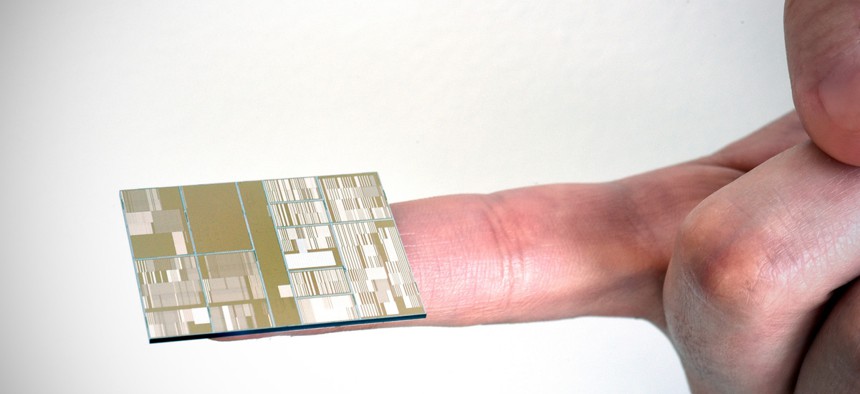IBM Has Built the Most Powerful Computer Chips in the World

Close up of IBM 7nm node test chip produced at SUNY Poly CNSE in Albany, NY. Flickr user IBM Research
This could be big. Er, small.
Since 1965, we have held onto the belief that computing power will double every two years, as argued in a paper by Gordon Moore, the eventual founder of Intel. But in recent years, scientists have been straining to keep Moore’s Law alive, as we start to approach the physical limit of how small we can make silicon chips.
Today (July 9), IBM has announced it has proved it’s possible to produce chips just 7 nanometers wide—or about the width of a few strands of DNA.
Past efforts to make chips this small have either required too much power to run, or haven’t been able to conduct electricity efficiently enough. IBM’s new process involves using Silicon Germanium—an alloy the company has been using since 1989—for its transistors, and a new way to etch the chips, called extreme ultraviolet lithography.

According to IBM, this could lead to a 50% performance and power boost over chips that are on the market today, effectively keeping Moore’s Law more or less intact for the time being.
Mukesh Khare, IBM’s head of semiconductor research, tells Quartz that the breakthrough didn’t come easily.
“This announcement clarifies that staying on Moore’s Law is extremely difficult,” he says.
IBM’s research on the project, part of a $3 billion, five-year investment into development of new chip technology, was conducted in Albany, New York, in conjunction with a local chip-making plant owned by GlobalFoundries, and with Samsung and the State University of New York.
While Intel is struggling to bring processors built on 10nm transistors to market, IBM’s research indicates that we haven’t yet reached the smallest transistor possible. “We are able to demonstrate that the technology can be scaled to 7 nm,” Kare says. “Can we do 5 nanometer? Well, we’re gonna try.”
“The [only] thing we can’t scale is an atom.”





